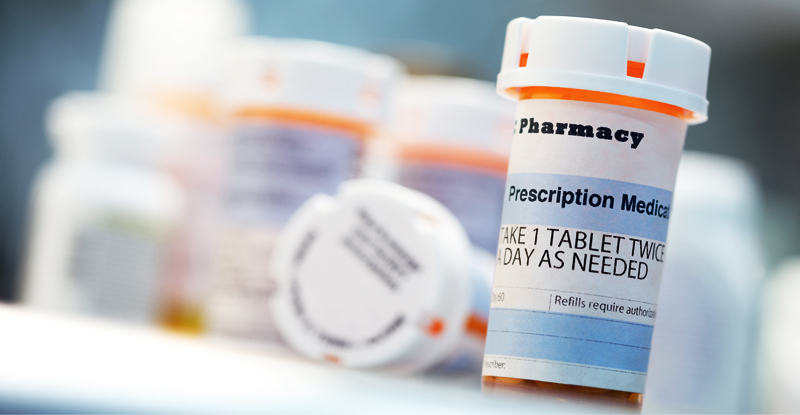From Volume to Value in Prescription Drugs

Health plans have been partnering with providers for almost a decade to move from a system that rewards the quantity of services delivered to one that focuses on providing the most valuable care at the right time. Now these organizations are turning a similar focus to the pharmaceutical industry.
Imagine you visit your doctor and receive a prescription for a new brand-name medication. The doctor’s office sends it to your pharmacy, where you pick it up later that day. But when you go to pay, the price tag for the medication is far too expensive. You ask the pharmacist if a generic drug is available so that you won’t have to pay so much out-of-pocket. This is the reality for many Americans. According to the IQVIA Institute for Human Data Science, 60 percent of commercially insured patients left their prescriptions unfilled when the cost was $250 or more out-of-pocket, whereas only 11 percent abandoned their medications when the prescription cost less than $30. [1]
The rising cost of prescription drugs is discussed and debated by the health care industry, the media, and in the halls of government on almost a daily basis. Late last month, the U.S. Congress held its first hearings on the cost of prescription drugs—beginning with a deep dive into the affordability of insulin, a medication that has more than doubled in price from 2012 to 2016. [2]
While policymakers in Washington look for solutions through policy, pharmaceutical companies and health plans explore ways to partner to ensure that prescription drugs reach the right patients, at the right time, for an affordable price.
A Novel Approach to Value-Based Contracting
The Center for Value-Based Pharmacy Initiatives (a part of the UPMC Center for High-Value Health Care) has partnered with UPMC Pharmacy Services to study “value-based” practices for pharmacy and developing innovative approaches to pharmaceutical contracts.
UPMC Health Plan recently announced a value-based agreement with AstraZeneca for BRILINTA®, a medication used to lower a patient’s chances of having another heart attack or dying from one in the 12 months following a heart attack. Brilinta has been shown to work well for patients with heart disease, but it is often prescribed less than other drugs due to its high cost.
UPMC Health Plan recognized this conundrum as an opportunity to construct a new type of value-based contract—one in which a health plan and a pharmaceutical company share the financial costs based on health outcomes for patients, and one that addresses out-of-pocket costs for patients.
Perhaps the most interesting component of this agreement is the reduction of out-of-pocket costs for UPMC for Life Medicare members by placing Brilinta in a generic drug tier, leading to potential savings of hundreds of dollars over a year. By lowering out-of-pocket expenses, patient access to the drug will increase because physicians who have shied away from prescribing Brilinta due to costs can now do so knowing that patients will be able to afford it. Patients will also benefit from additional UPMC Health Plan care management support, which includes education around the medication, side effects, and adherence.
Understanding Value-Based Contracting
A value-based pharmaceutical contract is an arrangement between a pharmaceutical company and an insurer, where discounts to the drug’s price are tied to whether patients respond positively to the medication. Unlike volume-based contracts, where discounts are tied to the quantity of a drug purchased, a value-based contract focuses on benefits for patients. Thus, in a value-based contract, everybody wins:
- Pharmaceutical companies are able to reach a broader group of patients who need their drug.
- Insurers get an assurance that the drugs will improve outcomes, and they share some of the traditional financial risk with pharmaceutical companies.
- Patients get clinical benefits and increased access to costly medications.
Traditional strategies attempt to mitigate high drug costs by relying on generics when appropriate, identifying drugs that are the most effective for certain diseases or conditions, and negotiating lower prices for those drugs based on volume contracting. Although these strategies work, health insurers and pharmaceutical companies are exploring new ways to approach these challenges.
Typically, “value” is considered the benefits of a drug divided by its cost. Thus, a very expensive drug that provides a cure for a disease might offer good value; conversely, an inexpensive drug that is not effective can offer poor value. Of course, the best value comes from drugs that are inexpensive, but very effective.
Impact on Care
Not all prescription drugs are the right fit for value-based
contracting. But as drug prices continue to increase, there is a unique
opportunity for health plans and pharmaceutical companies to collaboratively
devise solutions that optimize medication value while reducing costs. Innovative
approaches, like the one between UPMC Health Plan and AstraZeneca, are an
important component to any health plan’s strategy for achieving the quadruple aim—quality
care, lower costs, and a better patient and provider experiences.
[1] (Campbell, 2018)
[2] (Abutaleb, 2018)



